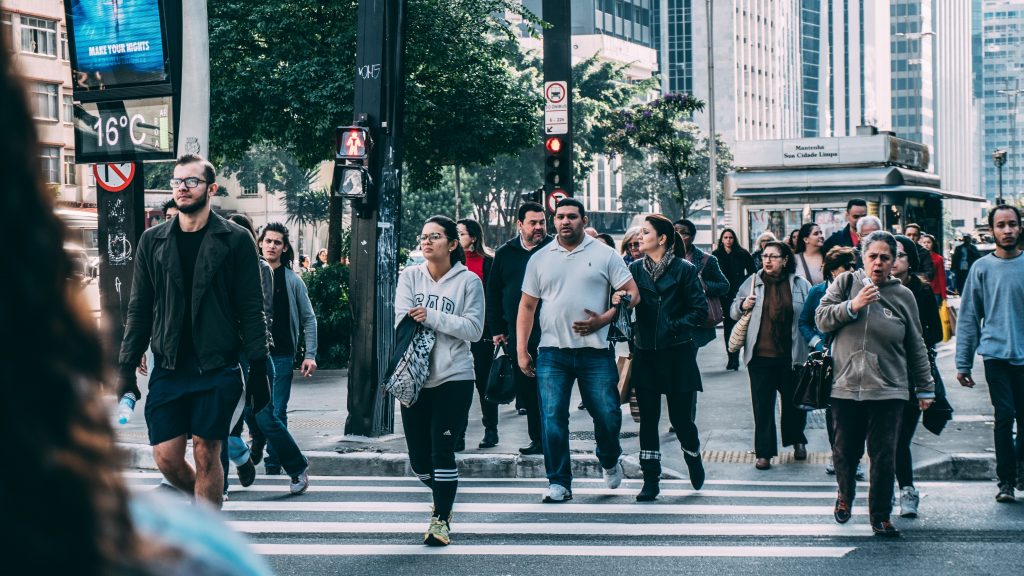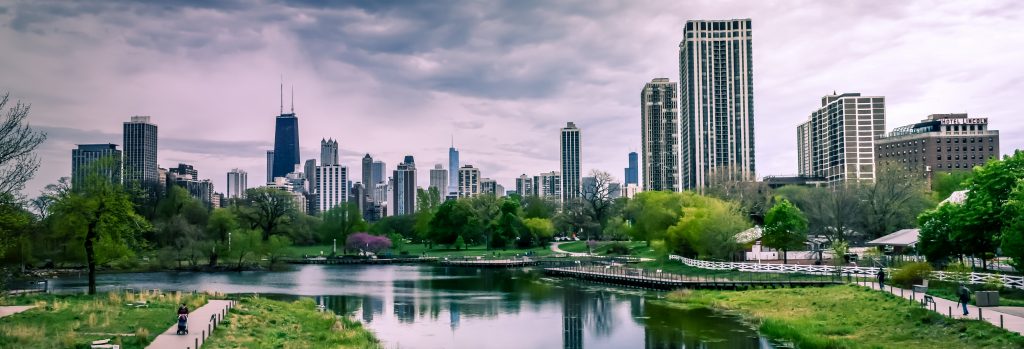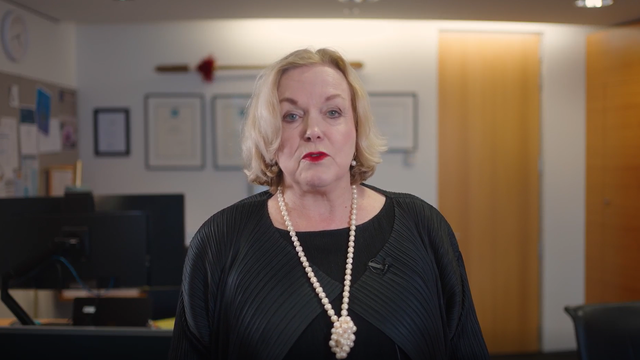Building Green and Sustainable Cities
Government Case Study: Vision 2050: Canada’s Net-Zero Carbon Emissions Plan

Lisa Helps
Mayor
City of Victoria (BC)

Dealing With a Global Crisis Locally
Racing Towards Low-Carbon Economy
Climate change is a global crisis, yet because of its threat and potential massive impact, it sometimes feels like it is too big for much of the world to tackle. As such, Mayor Lisa Helps from the City of Victoria in British Columbia, says that “cities are on the frontlines of the climate crisis” and are “well poised to play a leadership role in driving climate action.” In fact, as much as climate change is a global and national concern, “we at city council are the ones that are stopped in grocery stores and asked what we are doing about this really important issue in the community.” Sometimes the perception is that cities have limited authority or resources, but there is “still a lot that we can do with the tools available to us to meet the challenges we face.”
In the case of the City of Victoria, they have a 2050 vision and a Climate Leadership Plan, both of which are about “creating low-carbon prosperity.” For instance, the targets include “transitioning to 100% renewable energy by 2050 and cutting our greenhouse gas emissions in half by 2030.” The goal of the city is “to lead and inspire” and to “model what is actually possible.” However, in a city like theirs, “corporate emissions account for only 1% of total emissions,” so their real goal is to “support our residents and businesses as they take action to combat that other 99 % of emissions.” Unfortunately though, “turning off lights, recycling and using less water is not enough – that’s a 20th-century approach.”
“It means that what we need to fundamentally change the way we live in our city and in cities across the country because unless we act boldly now, climate change is going to have staggering impacts for human health as well as the well-being of our communities for generations.”

To that end, the City of Victoria “declared a climate emergency in 2019.” Immediately following that, the city: “held climate action town halls to discuss the obstacles businesses have in their ability to cut emissions”; “undertook a regulatory review of our legal options”; and “undertook a best practices review by a group of expert consultants.” Together, these actions led to a series of “high-impact initiatives,” each one designed to be implemented by the city so that “change can occur quickly.”
The first set of initiatives was in the area of mobility. This is an area that affects most residents because people tend to regularly move around. And targeting mobility is particularly impactful because “low-carbon mobility has the potential to reduce 34% of carbon emissions in our community.” As such, the city is “accelerating investments in high-quality cycling and pedestrian infrastructure, encouraging the shift to zero-emissions vehicles, and supporting zero-emissions Rapid Transit.” The most common zero-emissions vehicles are bikes, so providing appropriate infrastructure and encouraging their use is “within our jurisdiction and can take immediate effect.” Moreover, especially during the pandemic, “we’ve seen more seniors and kids on bikes than ever before. Not only is this better for the climate, but it is good for their health and wellbeing as well.” Since 2019, the city has “implemented 10 kilometers of high-quality bike infrastructure, and by the end of 2022 we will have implemented 32 kilometers of separated or safe bike paths.”
As for public transport (Rapid Transit), it is controlled by BC Transit and the provincial government, but they have equally ambitious climate plans, so that is a target that is also likely to be met quickly as well. And to support elective vehicles (EVs), “we’re expanding public on-street charging stations and prioritizing EV charging infrastructure in new buildings, and we’ve recently changed some by-laws too, with more exciting changes to come.”
Apart from mobility, the other high-impact initiatives are in the area of buildings. In BC, the provincial government has set up a “building step code” and a target that “all new buildings need to be net-zero energy ready by 2032.” However, the government “has left it up to cities to determine how quickly they move through the steps.” One of the initiatives that the City of Victoria is taking is “accelerated adoption of these steps to make sure that new buildings have as little energy consumption as possible.” The city is also “collaborating with our municipal colleagues around the region to develop a regional support service for home energy retrofits.” Councils don’t usually provide incentives for retrofits, but an exception was made in this case, and “a special allocation in our 2021 budget for up to $350,000 has been made to continue to implement this program and to meet demand.” Council is also “providing incentives for homes to transition from oil heating to heat pumps.” This alone “will reduce our emissions by 16%,” whilst taken together, all these building initiatives “will reduce carbon emissions by 31%.”
Other actions the city is taking
To further augment their position as leaders in this space, the City of Victoria has joined the Help Cities Lead campaign [1] , which was set up by the BC Climate Caucus “to make an even bigger impact when it comes to both new and existing buildings, and to local government authority.”
The campaign is focused on five key areas for municipal governments in BC to take the lead on:
- “Regulating greenhouse gas emissions for new buildings
- Regulating greenhouse gas emissions for existing buildings
- Mandating energy benchmarking and reporting
- Home energy labeling
- Property assessed clean energy (PACE) financing”
“With these tools, local governments across British Columbia will be able to further accelerate the action that we’re already taking on climate change.”
Since declaring a climate emergency and establishing a plan, the city has also “created a Climate Action Reserve Fund.” Funds from a carbon tax and cost savings of “around $300,000 annually from a retrofit of our street lights to LED,” have gone into that fund, “which has provided stability, even during COVID-19. We haven’t needed to slow down our climate action because we have money in that reserve.” To ensure that money keeps coming in and that action can continue, “we’ve also hired a grant coordinator who is scouring climate action grants to make sure that we are seizing all of the opportunities available to us.”
As part of that, the city has developed “Victoria 3.0, a new economic action plan, which is focused on driving low-carbon prosperity in the private sector.” This is a plan that reimagines the city and what it might look like next century, including an arts and innovation district and a marine innovation hub. In September 2019, the UN held a Climate Action Summit that said that there “are tremendous opportunities for cities to combat climate change globally and that there are massive economic opportunities that will arise from this.” Leveraging the opportunities is really important, and “through our Victoria 3.0 plan, we are hoping to seize at least some of that opportunity.”
[1] https://www.helpcitieslead.ca/



































